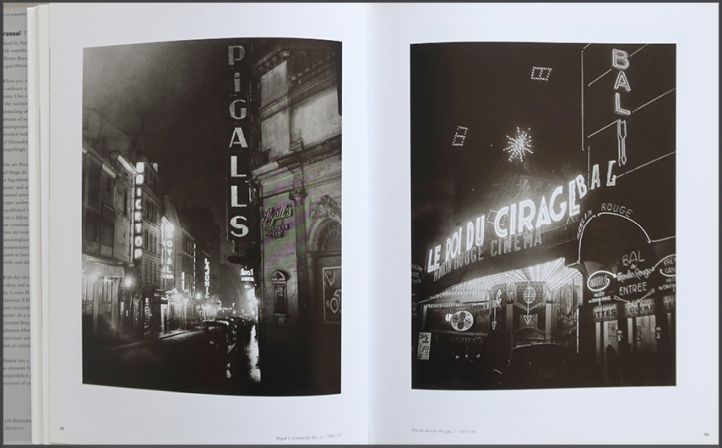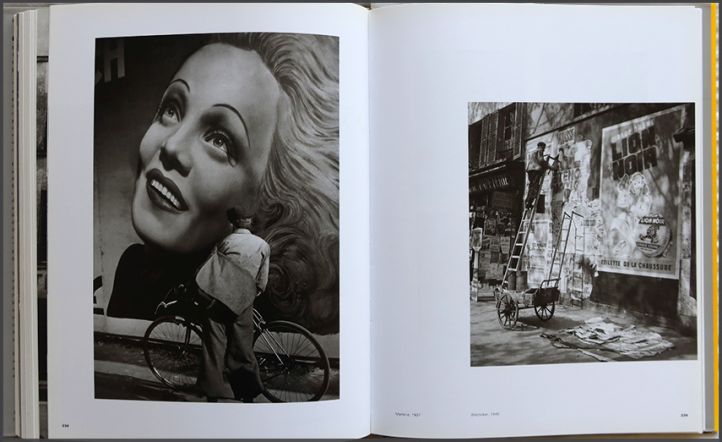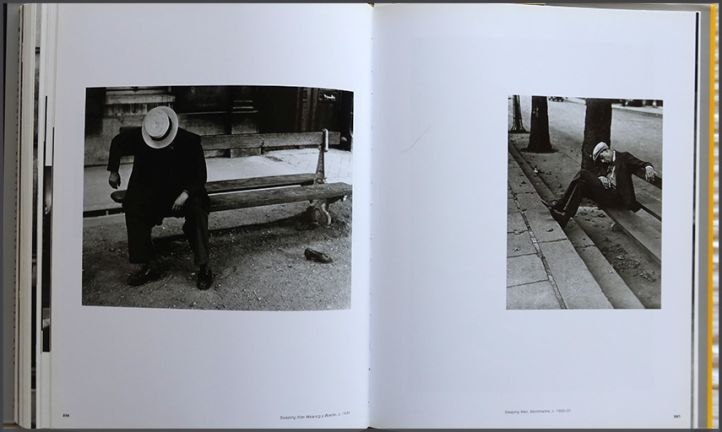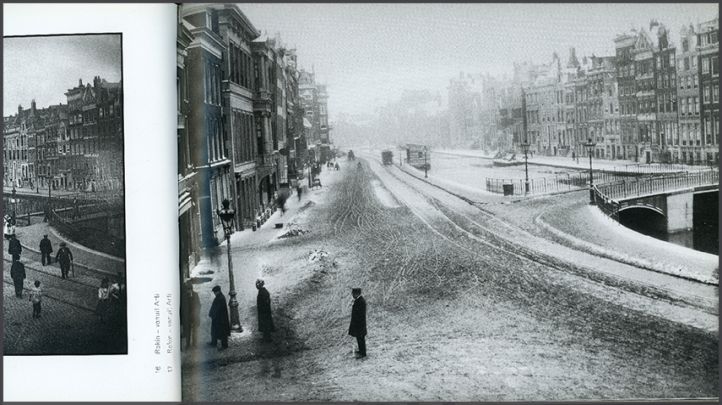| |
BRASSAÏ - THE MONOGRAPH | PHOTOBOOK PHOTOGRAPHY

BRASSAÏ - The Monograph (Bulfinch, 2000).
By Alain Sayag & Annick Lionel-Marie. 308 illustrations,
14 in colour.

Left: Pigall's American bar, 1930-32 | Right: Bal du Moulin Rouge, 1930-34

Rue de Lappe, c.1932

Picasso, Rue des Grands-Augustins, Paris. Sep.1939.
Brassaï had a special relationship with Pablo Picasso.

The Devil of Notre-Dame and the Tour Saint-Jacques, 1933.

Left: Marlene, 1937 | Right: Billsticker, 1948

Left: Sleeping Man
Wearing a Boater, c.1934 | Right: Sleeping Man, Montmartre c.1930-1

Walkers in the Rain, 1935


Brassaï pseudonym of Gyula Halász; b.09Sep1899 – d.08July1984) was a Hungarian–French photographer, sculptor, medalist, writer, and filmmaker who rose to international fame in France in the 20th century.
He was one of the numerous Hungarian artists who flourished in Paris beginning between the world wars. I visited his grave on CIMETIÈRE MONTPERNASSE.
Celebrating the work of one of the great photographers of the century, this image-packed monograph includes classic portraits of Picasso, Matisse, and the Surrealists, as well as other notable personalities from Paris in the 1930s. 15,000 first printing!
Superb monograph on the work of Hungarian-French photographer Brassaï (1899-1984).
Edited by Alain Sayag and Annick Lionel-Marie, with contributions by Jean-Jacques Aillagon, Brassaï, Gilberte Brassaï, Roger Grenier, Henry Miller, Jacques Prévert, and Werner Spies.
Contents includes Preface (foreword) + 1-page essay by Werner Spies (Director of the Musée National d'Art Moderne @Paris) + essay by Alain Sayag ('The Expression of Authenticity') + photos in chapter 'Paris After dark (1932) + 'Minotaure, 1933-1939' + 'Drawings and sculptures, 1946' + 'Camera in Paris, 1949' + 'Graffiti, 1960'.
Also an interview with Gilberte Brassaï, biography & bibliography. Plus a list of illustrations.
"The meaning of art is not authenticity but the expression of authenticity," wrote the Hungarian-born photographer Gyula Halász, better known as Brassaï, whose unflinching portraits of the seamier side of Paris nightlife during the 1930s and 1940s summon up an era when decadence and desperation ran side by side.
Brassaï's curiosity about his subjects and the originality of his approach highlight the depth of his identification with Paris, his adopted city.
The son of a professor of French literature, Brassaï had first visited the city at the age of 5; later, in the early 1920s, he returned to make it his home after completion of studies in fine art in Budapest and Berlin.
Settling in the bohemian arrondissement of Montparnasse, mixing with artists and writers, Brassaï took up photography "in order to capture the beauty of streets and gardens in the rain and fog, and to capture Paris by night."
He did want to become a news photographer, he made sure he stayed clear of that kind of photography.
He leads us into the smoky, highly charged world of clubs and cafés, where nicotine-stained lovers in cheap clothes become impossibly desirable through the camera's lens.
Streets, stairways, and canals are moodily lit; even a man rummaging for food in a rubbish bin takes on a cinematic aura. Yet Brassaï's photographs contain a strange mixture of seediness and resilience that ultimately triumphs over any false notions of glamour.
He depicts scenes of poverty and its trappings--alcoholism, prostitution, violence, hunger.
The chaotic social whirl of 1930s Paris dies down to the quiet suffering of a city under occupation,
with its two great literary lights, Jean-Paul Sartre and Simone de Beauvoir, sitting out the war, stony-faced in the Café de Flore. Accompanied by extracts from Brassaï's own writings, contemporaries such
as Henry Miller, and essays from other contributors, and containing 308 images, Brassaï is a fine testament to an artist whose images of one city have proved so enduring.
www.abebooks.com/ - /Brassai-Monograph-(Catherine Taylor)
en.wikipedia.org:_Brassaï
[09APR2025]
|



































